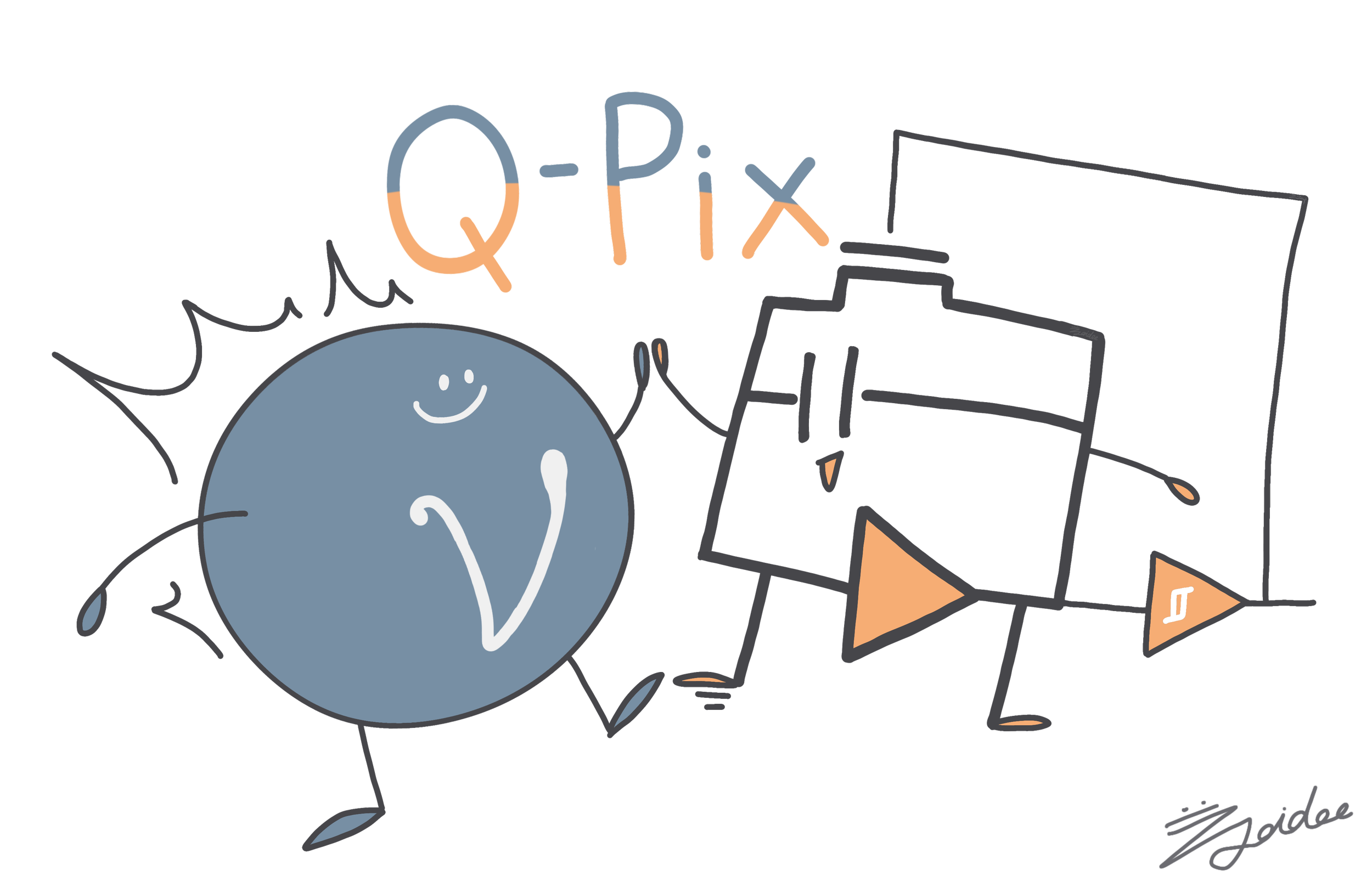The Q-Pix consortium endevours to realize a pixel-based, 3D readout technology based on the novel readout scheme (known as Q-Pix) with low detection thresholds enabling discovery of new physics at the very limit of detection.
What is the Q-Pix Concept
The Q-Pix concept proposes a continuously integrating low-power charge-sensitive amplifier (CSA) viewed by a Schmitt trigger. When the trigger threshold is met, the comparator initiates a ‘reset’ transition and returns the CSA circuitry to a stable baseline. This is the elementary Charge-Integrate / Reset (CIR) circuit. The instant of reset time is captured in a 32-bit clock value register, buffers the cycle and then begins again. What is exploited in this new architecture is the time difference between one clock capture and the next sequential capture, called the Reset Time Difference (RTD). The RTD measures the time to integrate a predefined integrated quantum of charge (Q). Waveforms are reconstructed without differentiation and an event is characterized by the sequence of RTDs. In quiescent mode the RTDs will be spaced with varying time intervals of seconds between RTDs, Whereas an event is signaled by the appearance of a sequence of varying microsecond ($\mu$s) RTDs. This technique easily distinguishes the background RTDs due to 39Ar decays and signal RTD sequences due to ionizing tracks. Q-Pix offers the ability to extract all track information providing very detailed track profiles. Q-Pix also utilizes a dynamically established network for DAQ enabling exceptional resilience against single point failures. Q-Pix naturally allows a large fraction of the entire detector to have very low detection thresholds, perhaps enabling discovery of new physics at the very limit of detection.
“Novelty does not confer automatically benefit.”
— David Nygren, Originator of the Q-Pix Concept
The consortium represents an effort from the University of Hawaii, Harvard University, University of Pennsylvania, University of Texas at Arlington, and Texas A&M University in collaboration with Argonne National Laboratory, Lawrence Berkeley National Laboratory, Oak Ridge National Laboratory and Fermi National Accelerator Lab. We The aim of this consortium is four-fold: i) demonstrate 3D pixel-based readout significantly enhances the physics reach of LArTPC's; ii) realize a working prototype of the Q-Pix chip meeting the requirements of operation in a cryogenic environment; iii) demonstrate the Q-Pix performance in a both small and large scale prototype LArTPCs; and iv) realize a multi-modal light detection solution capable of being integrated with the pixel readout.

